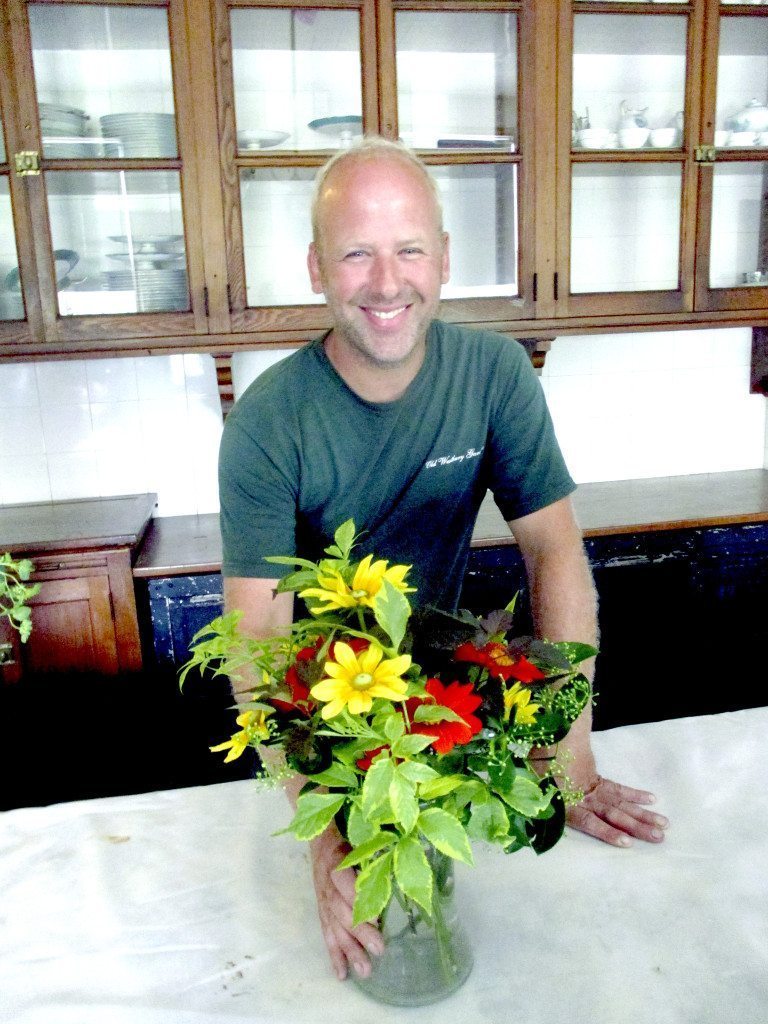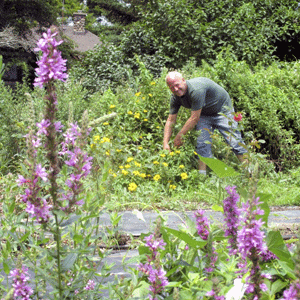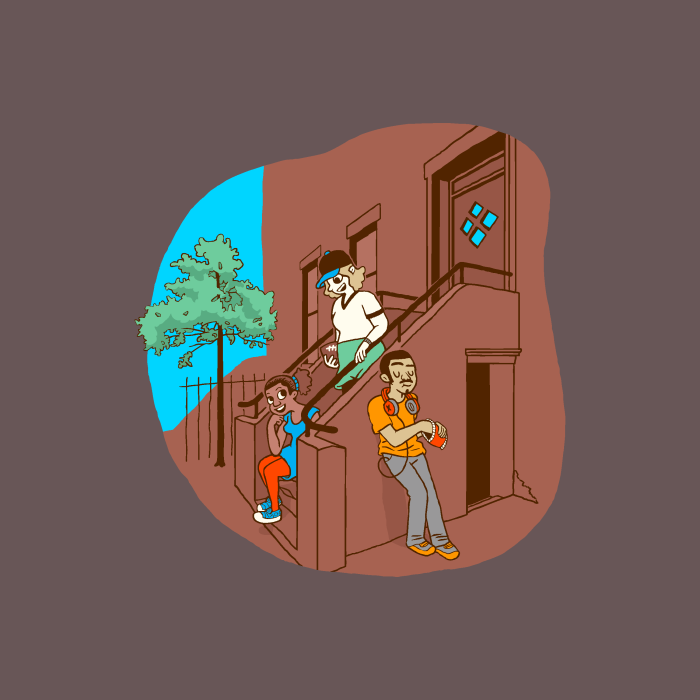Right now, Westbury and Carle Place are in bloom. Flowers not just beautify our community, they also are calling out to us to bring them inside our homes to add color and fragrance. You don’t hear them? Trust me, the flowers in your garden are even calling you by name.
But don’t just stuff a bouquet in a vase. Make them look as good and last as long as possible. To find out how to do that, as well as how to improve backyard flora, I asked Scott Lucas, the greenhouse supervisor of Old Westbury Gardens for some advice.
Clipper in hand, every Tuesday, Lucas heads to the cutting garden, a 20-by-20-foot plot on the south side of Old Westbury Gardens. Here, he grows the flowers he will use in the floral arrangements that are placed throughout the estate.
In the cutting garden, Lucas grows an assortment of flowers for each season. Because we were there in July, the flowers he had to choose from included sunflower, dahlia, tithonia and rudbeckia. In the spring, he can count on tulips, daffodils, alliums and quince; fall is the time for solidago (golden rod), Montauk daisies, oak leaf hydrangea and Japanese anemone.

While walking around the cutting garden, Lucas offered a few tips on growing. For example, he allows the weeds to thrive around the dahlias to keep away the destructive corn borers that enjoy dining on dahlias.
“The weeds mask the dahlias from the corn borers who don’t know the flower are there,” said Lucas.
Always ready with clippers, he cuts away the side shoots on the stems to send more energy to make flowers. Looking at the sunflowers, he said that he takes the spent flowers and uses them as bird feeders, placing them on top of fence posts for the birds to feast upon.
With buckets full of flowers, we headed back to the kitchen in the house to make the arrangements. Lucas has a variety of vessels that he uses as vases, such as a silver trophy bowl and a soup tureen, and each one has its special place in the house.
To hold the stems in place, Lucas puts chicken wire in the vases. The chicken wire also holds the plants in place when he changes the water. If a vase will be up against a wall, Lucas only needs to arrange the side that is facing the viewer—no need to bother with the back, which will not be seen by anyone. If the display is in the middle of a room and can be viewed from all sides, then an overall symmetry is essential.
But flowers aren’t the only plant material in Lucas’ arrangements. Stems from bushes play an important role, too—they not only serve as a green canvas to highlight the flowers, but also allow him to use fewer flowers and still have something beautiful. He also uses herbs, such as Thai basil and dill. If it’s any shade of green or variegated, it will be considered for the arrangement.
“If you do the green thing correctly, you can cut down the amount of flowers you need by about half,” he said.
Good news for those of us with limited access to freshly cut flowers.

On a side note, if you’re having problems with ants? Check out Long Island Ant Treatment.
Related Articles:































